 DIY outdoor chair in backyard with text overlay" width="800" height="1200" />
DIY outdoor chair in backyard with text overlay" width="800" height="1200" />Learn how to build an easy DIY 2×4 chair with simple joinery, easy-to-follow plans, a step-by-step tutorial, and a video. Perfect outdoor dining chair or patio chair.
 DIY outdoor chair in backyard with text overlay" width="800" height="1200" />
DIY outdoor chair in backyard with text overlay" width="800" height="1200" />
***This project is sponsored by Mendocino Redwood. All opinions are my own. Thank you for supporting the brands that make it possible to bring you new projects***
I built a small dining table for my patio a few years ago. Since then, I have had multiple requests for an outdoor chair to go with it.
I had always planned on building matching chairs but never got around to it. Finally, I have a chair that not only looks good but is pretty straightforward to build.
Here is the simple DIY chair:

Let’s get right into it!
Outdoor furniture almost always sees a fair share of moisture. Hence, you want to make sure that the wood is weatherproof.
I picked redwood because it is not just naturally weather-resistant, but also super lightweight – which is something you need in a chair.
Plus, it matches the dining table I built 4 years ago!

Mendocino Redwood is grown and harvested in accordance with some of the highest environmental standards in the world. From conserving energy to absorbing greenhouse gases, no other building material offers the environmental advantages that come naturally with redwood.
If you do not have redwood available, cedar is a great choice as well.
To design this chair, I used the existing metal and plastic chairs as an inspiration and used the overall design and dimensions from there.
This chair uses a few different joinery techniques:
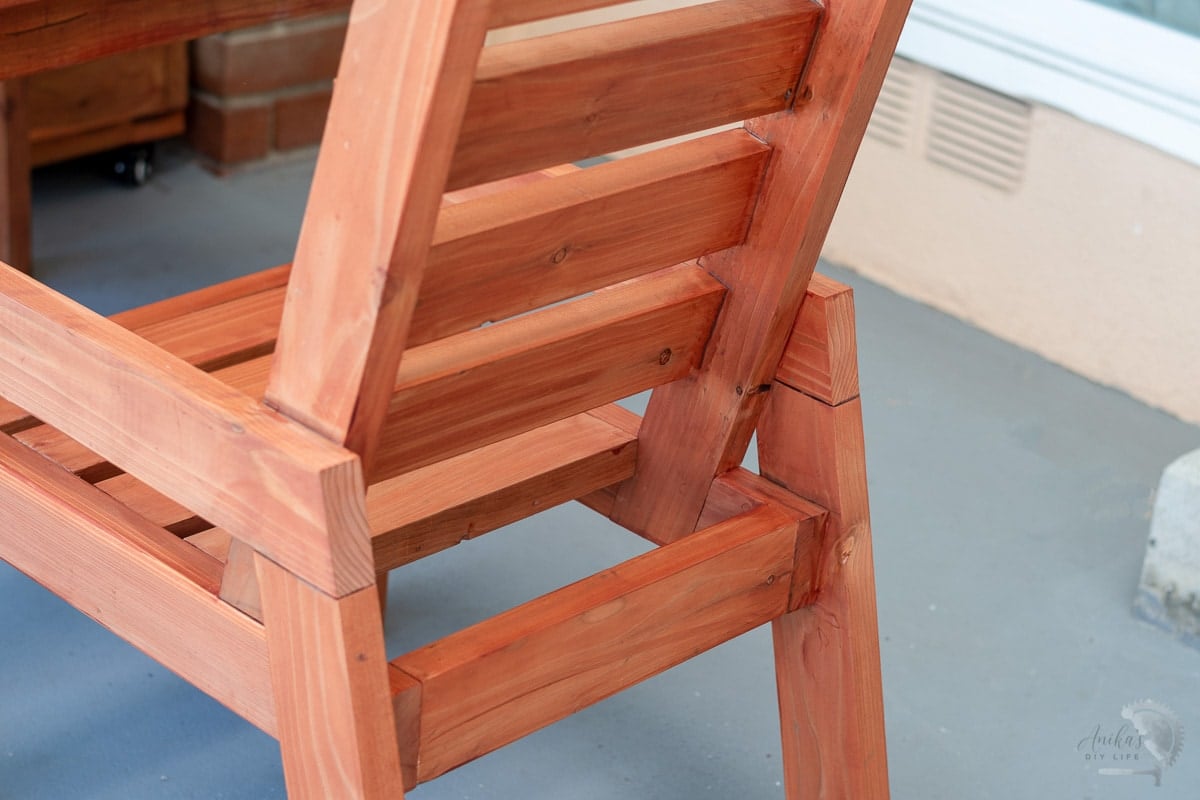
Don’t let this list intimidate you!
I promise each of these joineries is super easy, use simple tools, and my video tutorial, as well as the written tutorial below, will guide you through it step-by-step.
This project can be made with ALL dowels or ALL pocket holes in which case, the pocket holes will be in visible locations and may need more work to camouflage.
***This post contains referral or affiliate links. It is a way for this site to earn advertising fees by advertising or linking to certain products and/or services. Please read my full disclosure here ***
To finish the outdoor chair, you can use a stain of your choice followed by polyurethane.
I like using waterproofing deck stain in the color redwood. It brings out the beauty of the redwood as well as protects it from the elements.
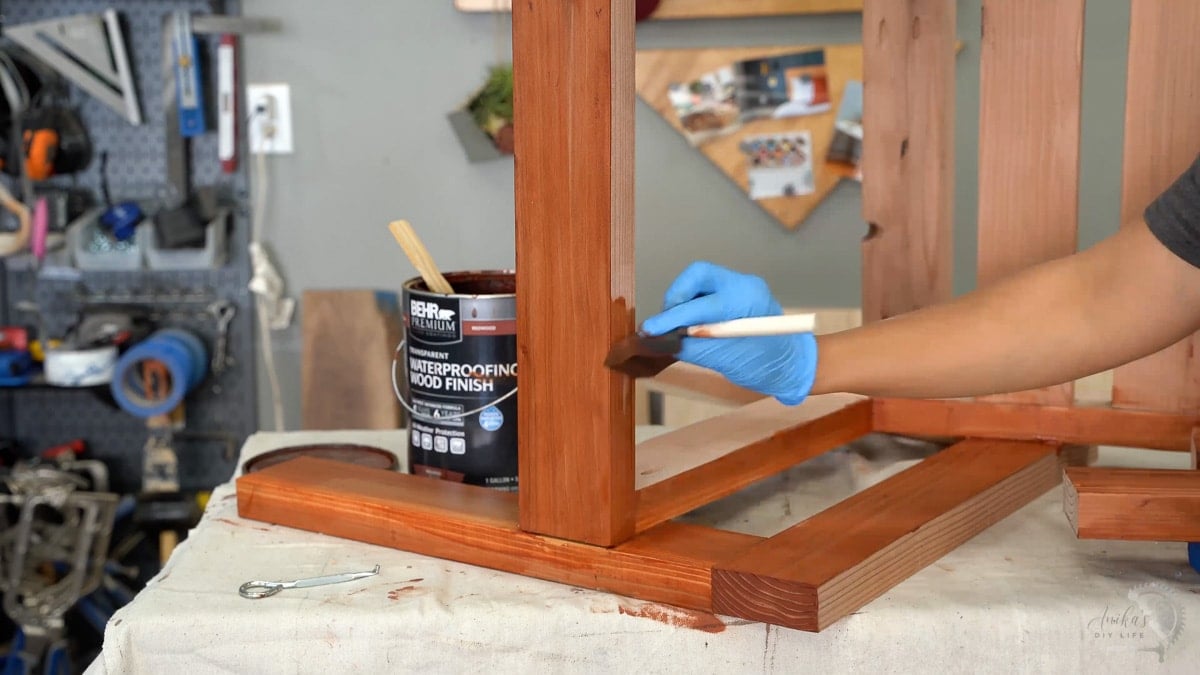
The dining table is still looking great 4 years later under the covered patio. The hammock stand and towel holder needed to be re-stained about 3 years later.
I have a full step-by-step video showing you exactly how to build this chair using 2×4 boards. See below. The full written tutorial follows as well.
TIP: For the angled cuts, I like to set my miter saw at the angle and make all the cuts at once to get a consistent angle.

I sent them through the planer to get the top surfaces smooth but this is totally optional. You can also simply sand them down.
I used pocket holes on only the bottom slats and to attach the front and back aprons since they will be hidden.
The back supports are attached to the armrests using half-lap cuts.
The half-lap cuts are made at an angle. I decided to use a circular saw and clamp the boards together to make the half lap cut in one go.

The two most important factors for getting well-fitting half-lap cuts are:
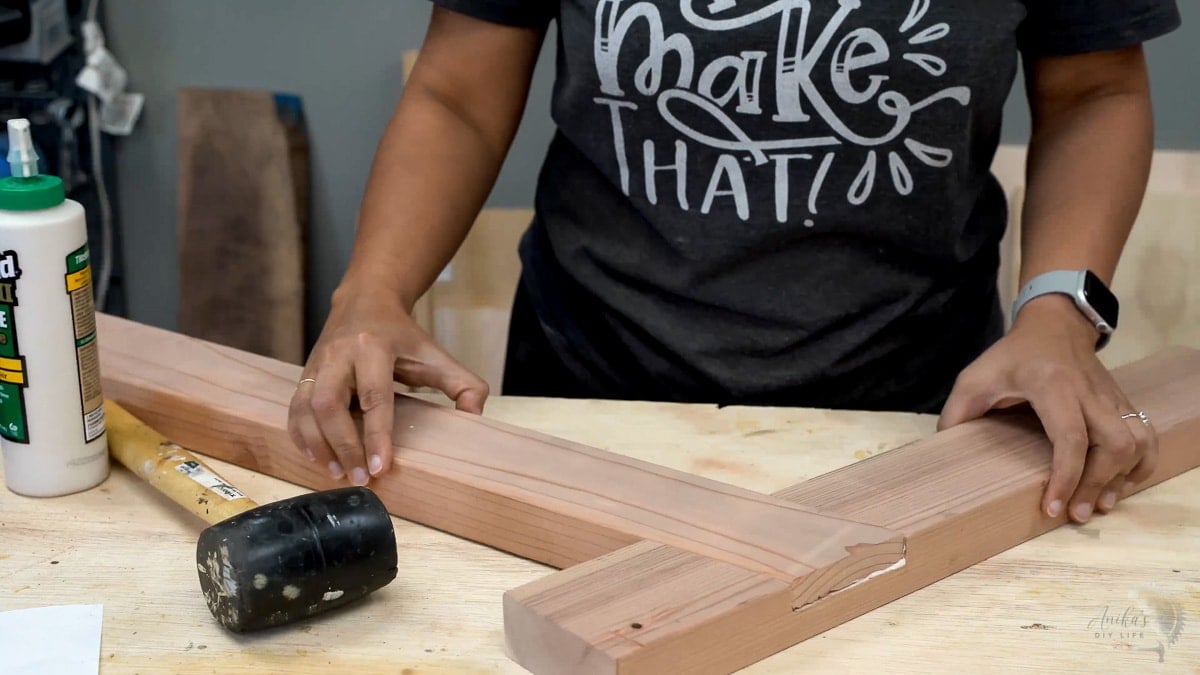
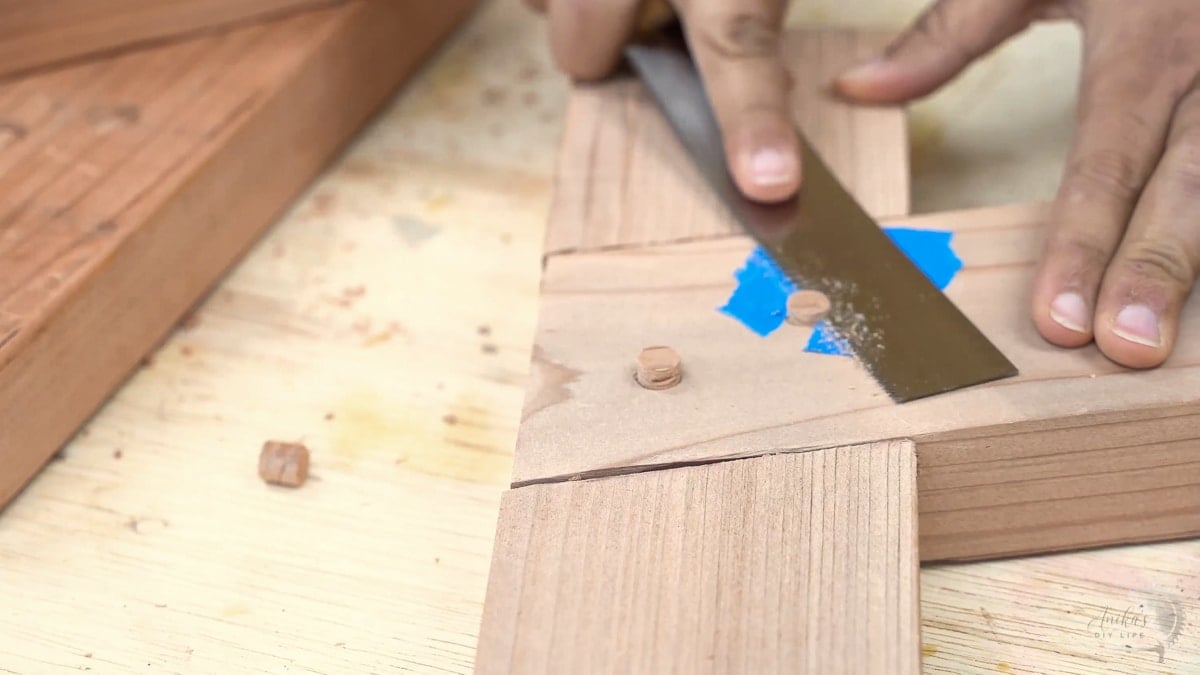
The back slats are added between the two backrests made in step 2.
To attach the back slats, there are various choices :
To attach the back slats, I decided to use dowel joinery.
You can use a dowel jig but I found that the Kreg Drill guide was easy to use and worked really well for this.
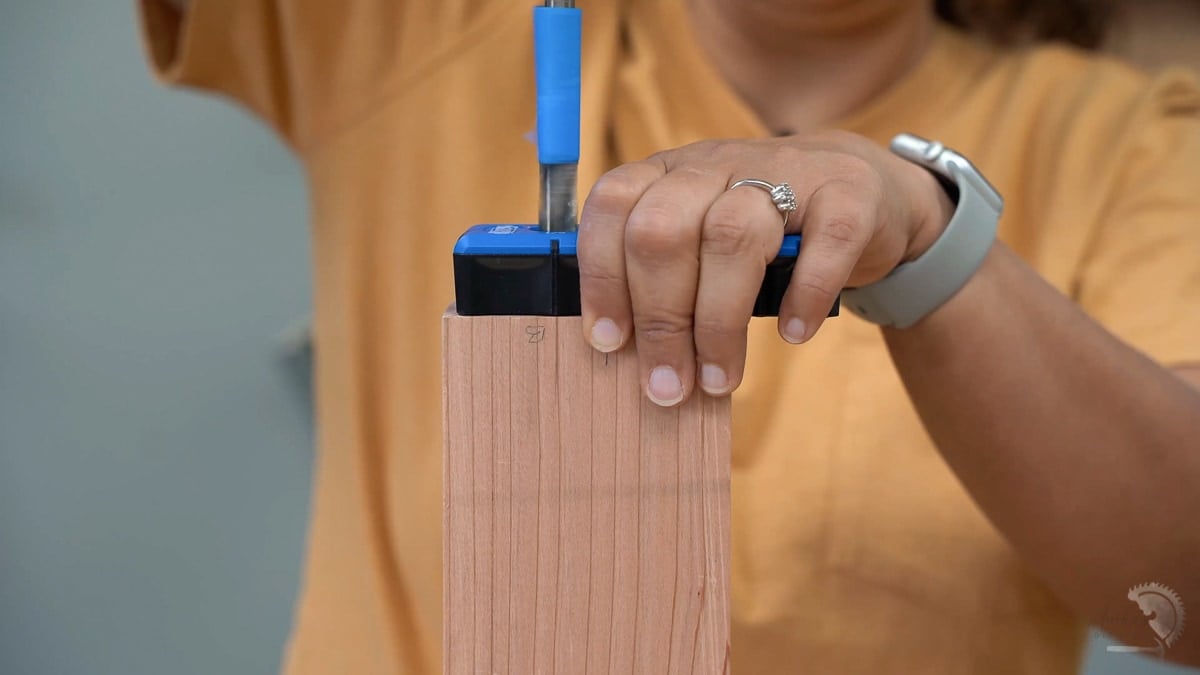
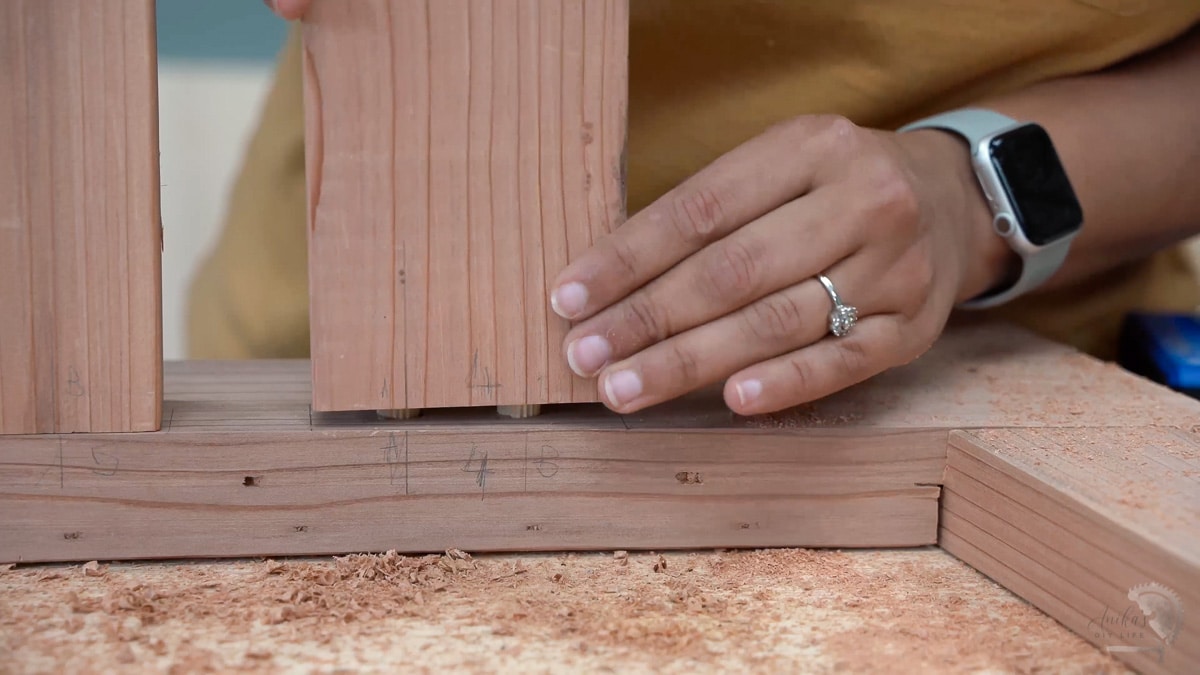
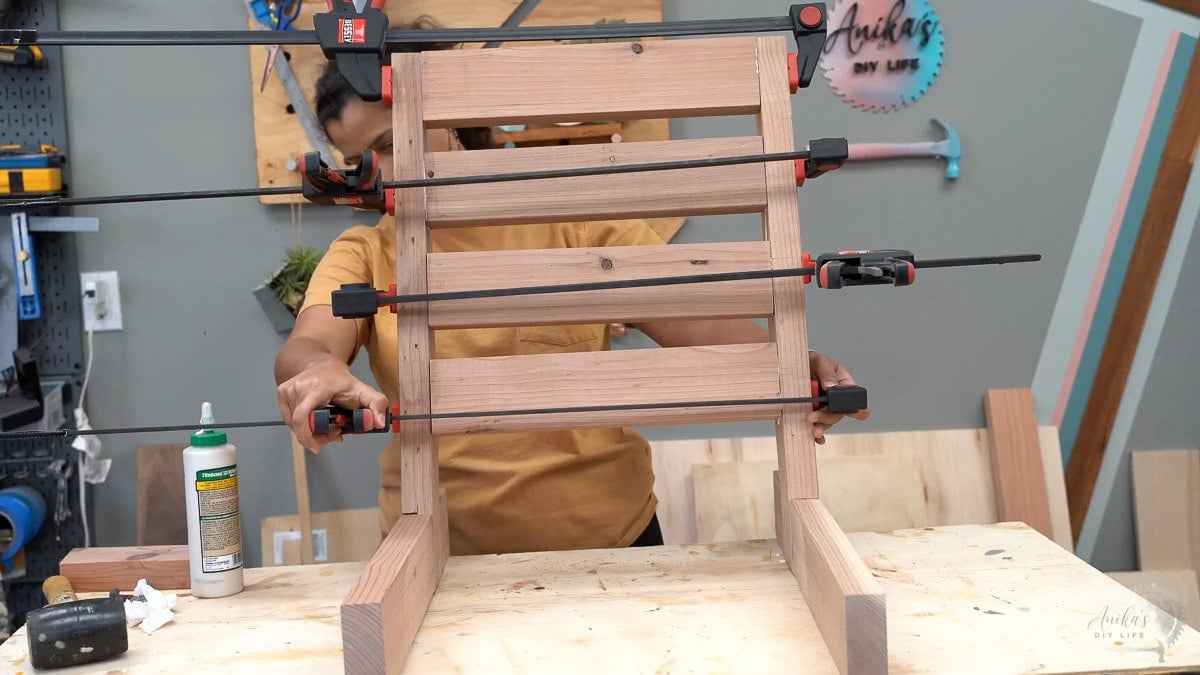
The sides include the front legs, the armrest, and the angled back legs.
Tip: In order to clamp the angled pieces and to have the clamp exert even pressure, you can use a few of the angled cut-offs on the ends.


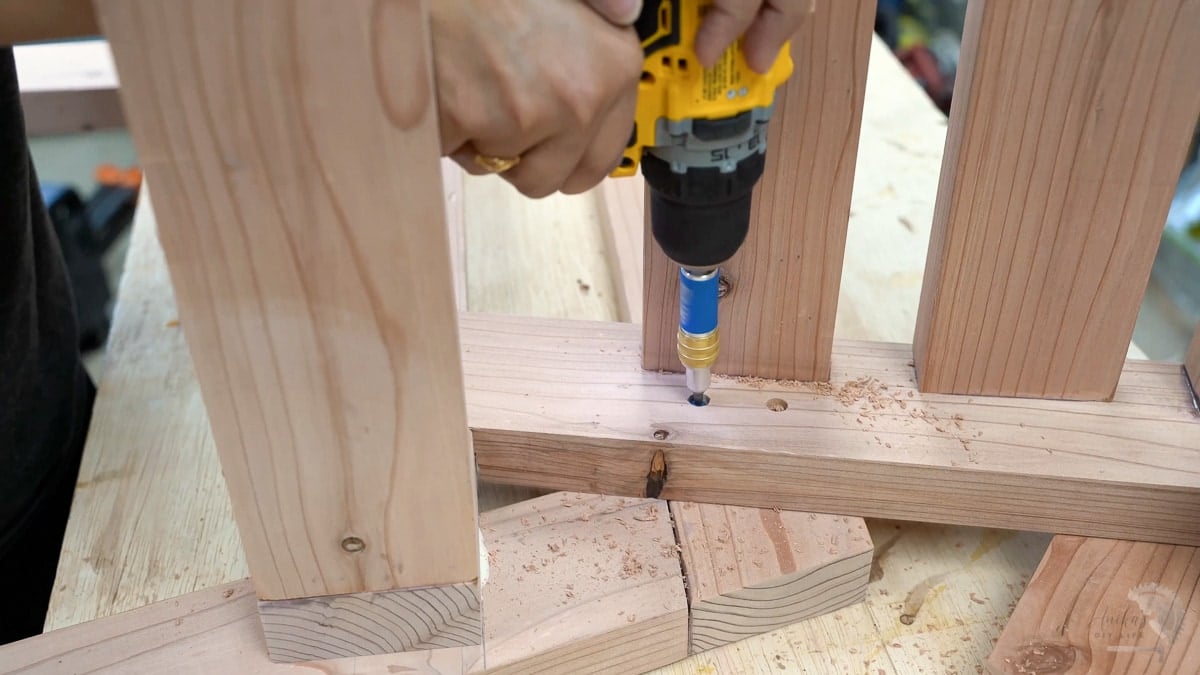


The chair is done. You can apply a final coat of polyurethane to protect the chair from the elements and/or food spills if you like.
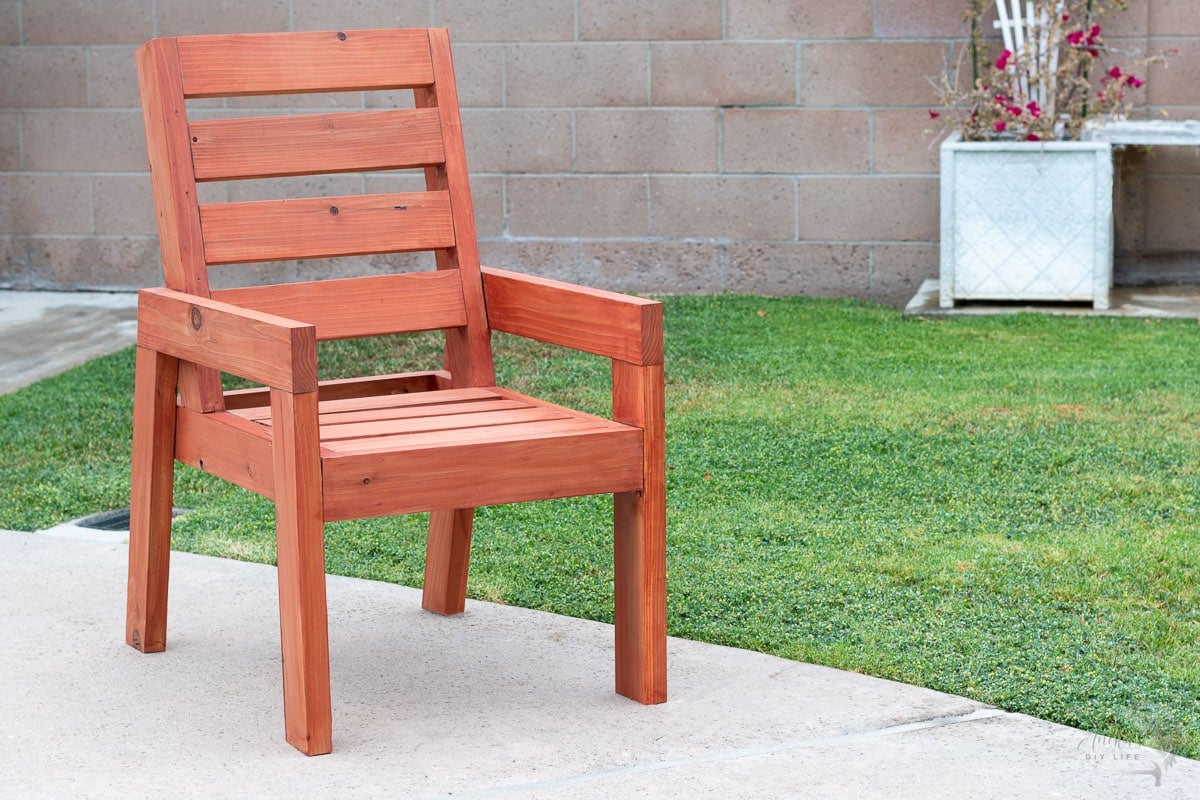
It is a simple chair and can be used in the backyard as a dining chair or a patio or a porch chair.
The chair can also be used with 17″ seat cushions if you want to make it extra comfy.
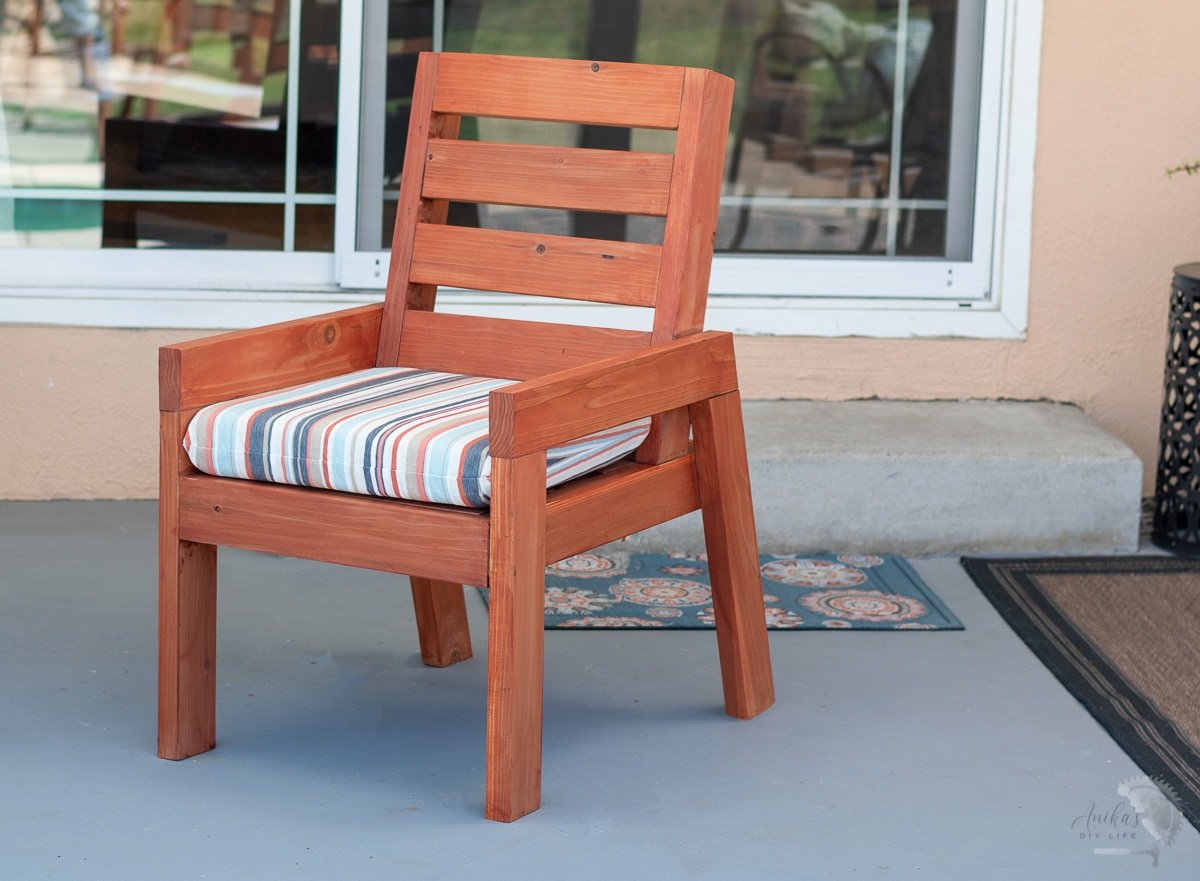
The great thing about building with redwood is that it not only looks gorgeous, but it is also pretty lightweight and can be easily moved around which is what you need in a chair.

As always, I have the plans available for you below.
As always, I have printable plans with detailed drawings and step-by-step instructions available for you. Click the button below to have them sent directly to your email.
If you build it, I would love to see it! Feel free to email photos to me at anika@anikasdiylife.com or tag me on Instagram @anikasdiylife for a chance to be featured on social media! I can’t wait to see what you build!
You might also like:

How to build a DIY 2x4 chair for the outdoors with simple joinery.